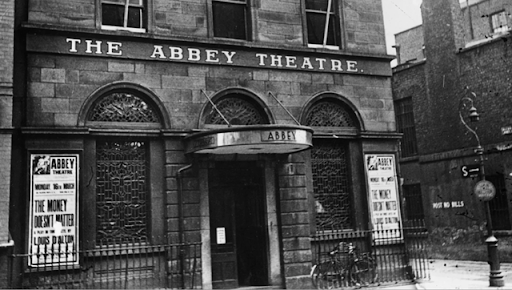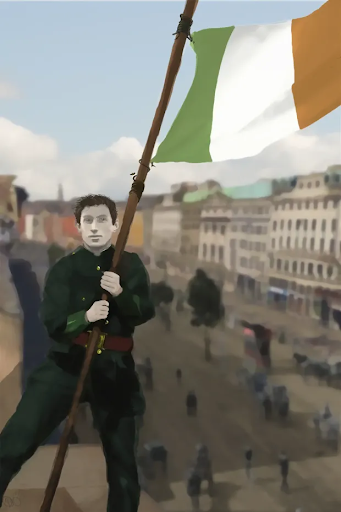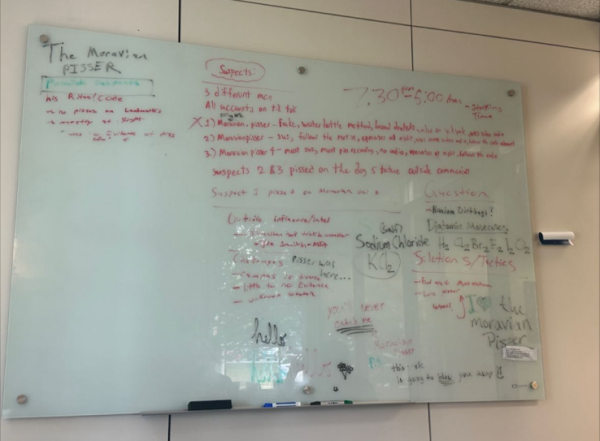Meanwhile, in Ireland: The Abbey Theatre

From Irish Central
ATTENTION: This article contains spoilers for the plays The Rising of the Moon by Lady Augusta Gregory and Cathleen Ni Houlihan by Lady Augusta Gregory and W.B. Yeats. Feel free to skip this article if you do not want spoilers for either work.
After centuries of cultural suppression, first established by Oliver Cromwell’s Irish Penal Laws in the early part of the 17th century, many ancient traditions that had been an integral and intrinsic part of Irish culture had nearly died completely. The most crucial of these traditions was language, and with it, the art of storytelling.
In the old days of Gaelic Ireland, that is the time up until the Plantation of Ulster in 1607, the Bard, also called an Ollamh (pronounced Awn Oh+luh), were the teachers and memory keepers. They were as highly regarded in society as the great kings. They held the history of the people, dealt with politics, and were a part of deciding when to go to war and when to make peace.
In the 19th century, a movement began. This movement, known as The Gaelic Cultural Awakening, aimed to restore what aspects of traditional Irish culture had been nearly lost and forgotten. This Awakening would lead to far greater things than just the restoration of culture from a literary perspective.
It would change Ireland forever.
![Original playbill of Cathleen [Kathleen] Ni Houlihan from 1916, from Irish Studies](https://comenian.org/wp-content/uploads/2023/04/unnamed-53.png)
Cathleen represented a personified Ireland, who called for young men to follow her and sacrifice themselves and reclaim the land that the unwelcome neighbours had stolen from her. Maud became Cathleen, and in doing so, Cathleen left the stage. In December 1904, the first productions of the newly founded National Irish Theatre, the first of its kind, opened. Yeats had long sought after restoring the old bardic traditions, and Lady Gregory had a passion for both literature, and the hope for a free Ireland, and so would these dreams come to fruition with the founding of The Abbey Theatre.
Lady Gregory wrote a play called The Rising of the Moon, which opened in March 1907. In this play, an escaped Irish political prisoner, who had been imprisoned because of rebel activities, comes across a police sergeant. The prisoner recognizes the sergeant as an Irishman who once held the same fiery passion for Ireland as he, the prisoner. The latter portion of the play is spent with the prisoner reminding the sergeant of who he is, and remembering good ole Granuaile – Grace O’Malley/Gráinne Ní Mháille (pronounced Graw+née+yuh nee Wall+eye).
Gráinne, known historically as The Pirate Queen, dedicated her life to Ireland when the Tudors threatened her and her way of life, and even would come face to face with Queen Elizabeth I at Greenwich in the summer of 1594. Like Cathleen, Gráinne became a representation of a personified Ireland who the people could look to and be inspired to fight for and with.
From the Abbey Theatre came Saint Enda’s School. Founded in 1908, this secondary school of the arts and drama taught boys in the Irish Language with the goal of restoring this aspect of traditional Irish culture. That alone was a big step for the restoration of the traditional Gaelic Irish culture, but the school became more, much like the Abbey Theatre itself.
Saint Enda’s was founded by barrister Pádraig Pearse (pronounced Paw+drig Pierce) and its teachers included many individuals who would go on to lead and die for the Irish Independence Movement.
So impassioned by this restoration of Irish language and culture, a number of people, many of whom were themselves teachers, playwrights, poets, and writers, in 1916, Easter Monday, 24 April, started a war in the hope of finally liberating Ireland.

Just after the tolling of the morning Angelus Bells, a shot was fired by the back entrance to Dublin Castle, which for a long time had been the central base of operations for the British. It killed a policeman standing guard there. This policeman, much like the sergeant in The Rising of the Moon, was an Irishman serving under the British police force in Dublin. Seán Connolly, an Abbey Theatre actor, had fired this fatal first shot.
By the end of the week on Saturday, the 1916 Easter Rising had ended with English Victory, with those such as Pearse, as the Rising’s leaders, being executed. These executions prompted a media storm and public outcry. However, while the rising itself failed, like many prior attempts of gaining freedom from Britain’s rule, it acted as a spark for the Irish War of Independence, which resulted in Irish victory.
Irish language and literature, as displayed through the impact of The Abbey Theatre, has played a major role in the eventual victory of Ireland and with it, the gaining of its independence after centuries under foreign colonial rule and many times oppression. The Abbey Theatre shows the crucial part that culture plays in both the conquest and the liberation of a people.






